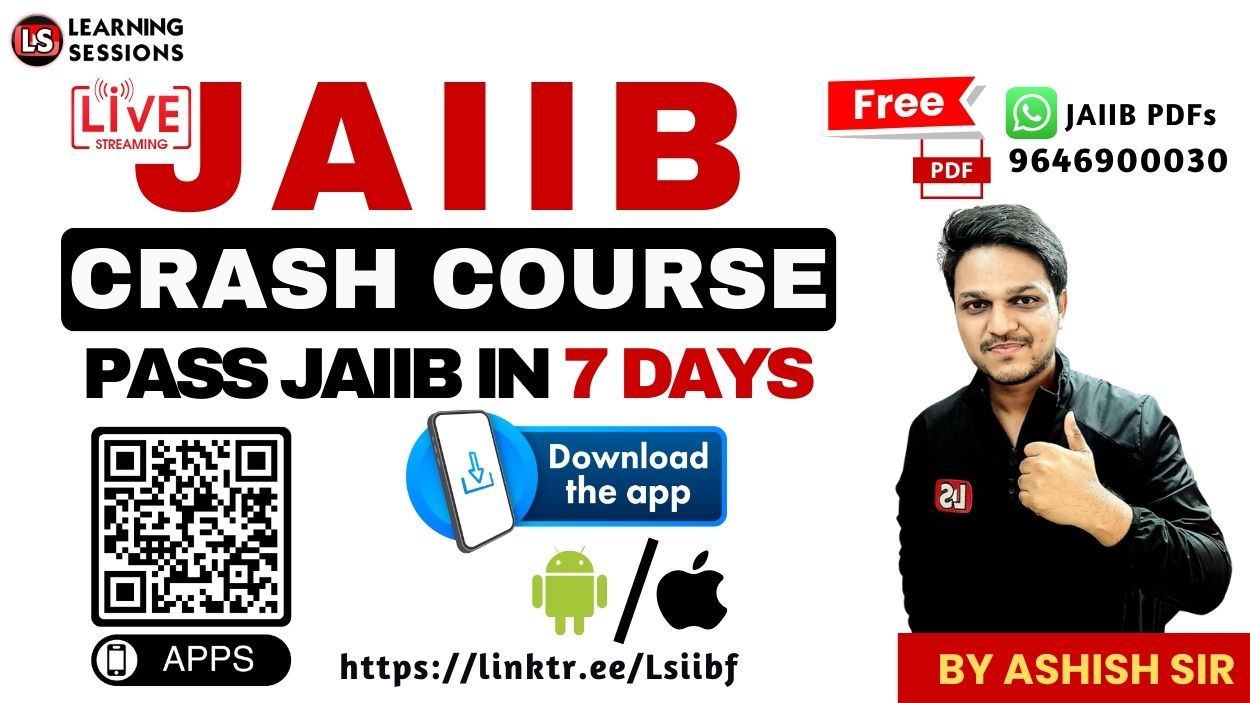Have you ever wondered how your money transfers are processed or what makes a bank locker so secure? In today’s fast-paced world, understanding the inner workings of banking services is more important than ever. This comprehensive guide is based on an insightful video lecture from Chapter 15 of the Principles and Practices of Banking Module A, where complex topics such as transfer instruments, digital payment systems, direct benefit transfers, and secure locker facilities are broken down into easy-to-understand segments.
Whether you’re a banking student, a finance professional, or simply curious about how banks safeguard your funds, this article has something for you. We begin by exploring traditional instruments like demand drafts and banker’s checks, then move into the world of digital transactions with NEFT and RTGS, and finally delve into the revolutionary realm of Direct Benefit Transfer (DBT) and safe deposit lockers.
📚 JAIIB Study Resources 📚
👉 Check Here
👉 Check Here
👉 Check Here
👉 Get Tests Here
👉 Check Here
👉 Before we dive in, watch this video for a complete breakdown:
00:00:10 – Introduction & Chapter Overview
The video opens by introducing Chapter 15 from the banking module, setting the stage for a deep dive into various banking services. The presenter highlights that this session will cover the evolution from traditional answer services to modern digital banking tools.
- Key takeaway: Understand the importance of mastering both conventional and contemporary banking practices.
- Quick Tip: Note down any queries as you watch—the lecture is designed to spark your curiosity!
00:01:29 – Exploring Transfer of Funds: Instruments & Mechanisms
In this section, the discussion shifts to the mechanics of fund transfers between bank branches or across different banks.
- Traditional Instruments:
- Demand Drafts (DD): A secure paper-based instrument used for intercity transfers with strict validity rules.
- Banker’s Checks: Often used for local payments, ensuring a secured transaction.
These instruments offer a tangible way to move funds, ensuring a layer of security through negotiable instruments. Have you ever needed to transfer funds quickly? Understanding these basics is essential before exploring digital alternatives.
00:07:17 – Digital Transfers: NEFT & RTGS Explained
The digital era has revolutionized banking with systems like NEFT (National Electronic Funds Transfer) and RTGS (Real Time Gross Settlement).
- NEFT:
- Operates on a batch process system, processing transactions in half-hourly cycles.
- No minimum or maximum amount restrictions, making it flexible for daily transactions.
- RTGS:
- Provides real-time settlement with a minimum amount requirement, ideal for high-value transactions.
- Ensures immediate fund transfer, enhancing efficiency and reliability.
These systems exemplify how digital banking reduces processing time and minimizes the need for physical instruments. Can you imagine a world where every transfer is instant and secure?
00:11:12 – Direct Benefit Transfer (DBT) & Electronic Benefit Transfer (EBT)
Moving beyond simple fund transfers, the video explores the transformative DBT and EBT systems.
- DBT/EBT Benefits:
- Transparency: Funds are directly transferred to beneficiaries’ bank accounts, reducing leakage.
- Cost-Effectiveness: Cuts down administrative costs and speeds up delivery of benefits.
- Financial Inclusion: Extends banking services to remote areas, ensuring that subsidies and pensions reach the right people.
- How It Works:
- A designated lead bank in each district coordinates with other banks.
- Uses a “One District One Bank” model to streamline processes.
This section highlights the pivotal role of DBT in modern governance and public welfare initiatives, making it a cornerstone for financial inclusion.
00:17:35 – Securing Valuables: Safe Deposit Lockers
Safe deposit lockers are more than just a storage solution—they are a testament to the security measures banks adopt for safeguarding valuables.
- Core Features:
- Enhanced Security: Lockers are maintained in strong rooms with CCTV surveillance and strict access control.
- Customer Relationship: The bank acts as a lessor, ensuring a trusted relationship with the lessee.
- Operational Insights:
- Only authorized personnel are allowed entry.
- Detailed records are maintained to ensure transparency.
Imagine storing your precious documents or jewelry with complete peace of mind—this is what modern bank lockers are all about!
00:29:16 – Nomination Facilities for Lockers
In the final part of the lecture, the focus shifts to the nomination facility for safe deposit lockers.
- Why Nomination is Important:
- Ensures that in the event of unforeseen circumstances, such as the death of the locker holder, access rights are clearly defined.
- Simplifies the process of succession and claims settlement.
- Regulatory Guidelines:
- Follows specific sections under the Banking Regulation Act.
- Allows for single or multiple nominations based on account type.
By understanding the nomination rules, you ensure that your valuables are protected and accessible to the right individuals when needed.
Conclusion
This video and article have taken you on an insightful journey through the world of banking services—from traditional instruments like demand drafts and banker’s checks to cutting-edge digital transfer systems like NEFT and RTGS. We also delved into the significant impact of Direct Benefit Transfer in ensuring financial inclusion and examined how secure safe deposit lockers, along with robust nomination facilities, keep your valuables safe.
Armed with these insights, you can better appreciate the blend of technology and traditional practices that make modern banking so efficient and secure. Now, it’s your turn to apply this knowledge! Whether you’re managing personal finances or navigating a career in banking, implementing these concepts can streamline your financial transactions.
We’d love to hear your thoughts—drop your questions or comments below and join the conversation. Don’t forget to subscribe for more deep dives into the fascinating world of finance, and check out our related articles for further learning!
Download the PDF
For a quick reference and detailed notes, download the PDF version of this guide here







